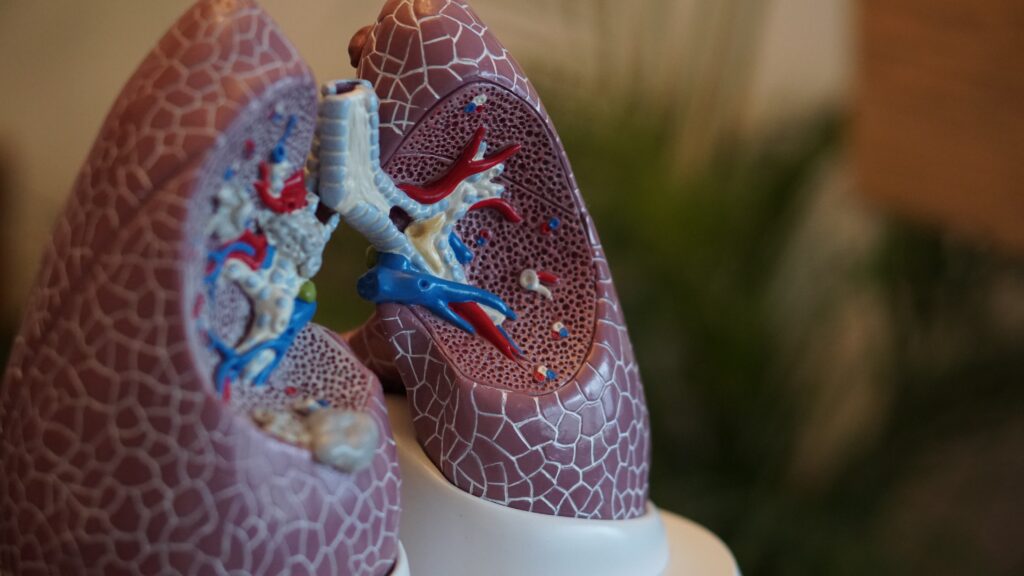If you’re looking to enhance your lung health, exercise might just be the key. Engaging in regular physical activity not only helps you maintain a healthy weight, but it also has numerous benefits for your lungs. From increasing lung capacity to reducing the risk of respiratory infections, exercise can play a crucial role in improving your lung health. In this article, we’ll explore some effective exercises that can enhance your lung function and overall respiratory well-being. So get ready to take a deep breath and discover how exercise can make a significant difference in your lung health.
Understanding the Relationship Between Exercise and Lung Health
When it comes to overall health, we often focus on exercise’s benefits for our cardiovascular system, weight management, and mental well-being. However, it’s important not to overlook the significant impact that exercise can have on our lung health. Regular physical activity can improve lung function, enhance lung capacity, and even decrease the risk of respiratory diseases. By understanding this relationship and incorporating specific exercises into your routine, you can optimize your lung health and enjoy the benefits of improved breathing.
The Effect of Physical Activity on Lung Function
Physical activity plays a crucial role in maintaining and improving lung function. When you exercise, your breathing rate increases, delivering more oxygen to your lungs. This increased demand for oxygen challenges your respiratory system, effectively strengthening your lungs over time. Regular exercise can also promote efficient gas exchange in the lungs, allowing for the removal of carbon dioxide and the intake of fresh oxygen.
How Exercise Enhances Lung Capacity
Lung capacity refers to the maximum amount of air that your lungs can hold. By engaging in exercises that target your respiratory system, you can increase your lung capacity and breathe more deeply. deep breathing exercises, such as those practiced in yoga or meditation, can help expand the alveoli in your lungs, allowing for greater air intake. Aerobic exercises, which elevate your heart rate and increase oxygen consumption, are also effective in improving lung capacity.
Impact of Regular Exercise on Respiratory Diseases
Regular exercise has been shown to have a significant impact on reducing the risk of respiratory diseases. Studies have found that individuals who engage in regular physical activity have a lower risk of developing conditions such as asthma, chronic bronchitis, and chronic obstructive pulmonary disease (COPD). Exercise can also help manage symptoms in individuals already diagnosed with respiratory diseases, improving their quality of life and reducing the frequency and severity of symptoms.
Types of Exercises that Boost Lung Health
Now that we understand the positive impact exercise can have on lung health, let’s explore the different types of exercises that specifically target and enhance respiratory function.
Aerobic Exercises
Aerobic exercises, also known as cardiovascular exercises, are an excellent way to improve lung health. These exercises increase your heart rate and breathing rate, pumping more oxygen to your muscles and lungs. Activities such as running, cycling, swimming, brisk walking, and dancing are all examples of aerobic exercises that can help strengthen your respiratory system.
Breathing Exercises
Breathing exercises are focused on improving your lung capacity and efficiency. These exercises often involve conscious control of your breath, slowing it down and deepening it. By practicing techniques such as diaphragmatic breathing or pursed lip breathing, you can increase your lung volume and enhance your overall breathing pattern. Breathing exercises can be done anywhere, making them accessible and easy to incorporate into your daily routine.
Yoga for Lung Health
Yoga is a holistic practice that combines physical postures, breathing exercises, and meditation. Many yoga poses specifically target the respiratory system, expanding the lungs and improving their function. Poses like the Deep Breathing Pose (Sukha Pranayama) and the Lion’s Breath (Simhasana) can help increase lung capacity, strengthen the diaphragm, and promote healthier breathing habits. Adding a regular yoga practice to your routine can greatly benefit your lung health.
HIIT (High Intensity Interval Training)
High-intensity interval training, often referred to as HIIT, involves short bursts of intense exercise followed by periods of rest or lower intensity exercise. This type of training has been found to improve lung capacity and oxygen consumption. HIIT workouts can vary in intensity and duration, allowing you to tailor your routine to your fitness level and goals. Incorporating HIIT exercises like jumping jacks, burpees, or sprints into your workout routine can provide an extra boost to your lung health.

Guided Breathing Techniques During Exercise
In addition to incorporating specific exercises into your routine, it’s essential to focus on your breathing techniques during physical activity. Proper breathing can optimize oxygen intake, improve lung function, and enhance your overall performance. Here are three guided breathing techniques you can practice during exercise:
Pursed Lips Breathing
Pursed lips breathing involves inhaling through your nose and exhaling through pursed lips, as if you were gently blowing out a candle. This technique helps slow down your breathing and keeps the airways open for a longer duration, facilitating more efficient oxygen exchange.
Deep Breathing
Deep breathing, also known as diaphragmatic breathing, involves inhaling deeply through your nose, allowing your diaphragm to fully expand, and exhaling slowly through your mouth. This technique promotes deeper breaths and can help increase lung capacity over time.
Belly Breathing
Belly breathing focuses on engaging your diaphragm and expanding your belly as you inhale deeply. This technique encourages the use of your diaphragm rather than shallow chest breathing, allowing for a more efficient exchange of oxygen and carbon dioxide.
Practicing these guided breathing techniques during exercise can help optimize your lung health and make your workouts more effective.
Creating a Workout Routine for Lung Health
Now that you understand the relationship between exercise and lung health, it’s time to create a workout routine that specifically targets your respiratory system. By incorporating lung-friendly exercises into your daily routine, tailoring your workouts to your current lung capacity, and balancing moderate and high-intensity exercises, you can maximize the benefits for your lung health.
Incorporating Lung-Friendly Exercises in Daily Routine
To improve lung health, aim for a well-rounded exercise routine that includes a mix of cardiovascular exercises, breathing exercises, and strength training. Aerobic activities like brisk walking, biking, or swimming should be performed for at least 150 minutes per week. Additionally, dedicate time to practicing breathing exercises such as diaphragmatic breathing or pursed lips breathing several times a day.
Tailoring Workouts according to Current Lung Capacity
It’s important to listen to your body and adjust your workouts accordingly, especially if you have a pre-existing lung condition. If you’re just starting or have a lower lung capacity, begin with lower-intensity exercises and gradually increase the duration and intensity as you build up strength. Consulting with a healthcare professional or a certified fitness trainer can help you design a workout routine that suits your specific needs.
Balancing Moderate and High Intensity Workouts
Finding the right balance between moderate and high-intensity workouts is key to optimizing your lung health. Moderate-intensity exercises, such as brisk walking or cycling, should be your go-to for regular aerobic activities. High-intensity workouts, like HIIT or interval training, can provide additional benefits but should be approached with caution, especially if you have any underlying respiratory conditions. Gradually incorporate high-intensity workouts into your routine and pay attention to any signs of overexertion or discomfort.
Monitoring Progress and Adjusting Your Workout Routine
As you embark on your journey to improve lung health through exercise, it’s essential to monitor your progress and adjust your workout routine accordingly. By keeping track of improved breathing, adjusting exercise intensity with improved lung capacity, and recognizing signs that your workout is benefiting your lungs, you can ensure that you’re continually optimizing your lung health.
Keeping Track of Improved Breathing
One of the clearest indicators of improved lung health is better breathing. Pay attention to changes in your breath, such as increased ease of breathing during physical activity, a decreased need for rest breaks, or less shortness of breath during daily tasks. These positive changes signify that your exercise routine is positively impacting your lung health.
Adjusting Intensity with Improved Lung Capacity
As you consistently engage in lung-friendly exercises, your lung capacity is likely to improve over time. It’s crucial to adjust your exercise intensity accordingly to continue challenging your lungs and achieving further progress. Gradually increase the duration or intensity of your workouts or try new exercises that require greater respiratory effort. However, always listen to your body and consult with a healthcare professional if you have any concerns.
Signs Your Workout is Benefiting Your Lungs
Aside from improved breathing, there are other signs that your workout routine is benefiting your lungs. These include increased stamina and endurance, improved cardiovascular fitness, decreased resting heart rate, and a reduced risk of respiratory infections. Pay attention to these positive changes and celebrate your achievements as you prioritize your lung health.
Understanding the Role of Hydration in Exercise
When it comes to optimizing lung health through exercise, hydration plays a critical role. By understanding the benefits of hydration during exercise, determining the optimum fluid intake for lung health, and recognizing the impact of hydration on breathing during workouts, you can ensure your body is adequately prepared for optimal lung function.
Benefits of Hydration During Exercise
Staying hydrated during exercise is essential for overall performance and maintaining proper lung function. Hydration helps regulate body temperature, lubricate joints, transport nutrients, and eliminate waste products. proper hydration ensures optimal blood volume, aiding in the efficient transportation of oxygen and carbon dioxide by the lungs.
Optimum Fluid Intake for Lung Health
The exact fluid intake necessary for optimal lung health during exercise varies depending on factors such as intensity, duration, and environmental conditions. As a general guideline, aim to drink water or fluids containing electrolytes before, during, and after exercise. Drinking water throughout the day, even when you’re not exercising, is also vital for maintaining proper hydration levels.
Hydration and Breathing During Workouts
Inadequate hydration can impair lung function and lead to increased fatigue during exercise. Dehydration can cause the airways to become narrower, making it more difficult for air to flow in and out of the lungs. This can result in shortness of breath, reduced lung capacity, and a decreased ability to perform at your best. By staying properly hydrated, you can support optimal lung function and ensure comfortable breathing during workouts.

Diet and Nutrition for Supporting Lung Health and Exercise
In addition to exercise and hydration, maintaining a healthy diet is crucial for supporting lung health and optimizing the benefits of exercise. By incorporating foods that enhance lung function, considering nutritional supplements for lung health, and maintaining a balanced diet while exercising, you can give your respiratory system the nutrients it needs to thrive.
Foods That Enhance Lung Function
Certain foods are particularly beneficial for lung health due to their high nutrient content. Include a variety of fruits and vegetables in your diet, as they are rich in antioxidants and vitamins that support lung function. Foods such as spinach, kale, broccoli, oranges, berries, and fish provide essential nutrients like vitamin C, vitamin E, beta-carotene, and omega-3 fatty acids that promote healthy lungs.
Nutritional Supplements for Lung Health
In some cases, you may want to consider nutritional supplements to support your lung health, especially if you have specific dietary restrictions or deficiencies. Consult with a healthcare professional before starting any supplements, as they can provide guidance on the appropriate dosage and ensure it aligns with your overall health goals.
Maintaining a Balanced Diet While Exercising
When engaging in regular exercise, it’s important to fuel your body with a balanced diet that provides all the necessary nutrients for optimal lung health. Focus on consuming lean proteins, whole grains, healthy fats, and a variety of fruits and vegetables. Stay mindful of your calorie intake and ensure you’re consuming enough to sustain your energy levels while supporting your lung health.
The Risks of Overworking the Lungs During Exercise
While exercise is essential for lung health, it’s equally important to be aware of the risks of overworking your lungs. Pushing your respiratory system beyond its limits can lead to overexertion, discomfort, and potential harm. By identifying signs of overexertion, understanding how it negatively affects the lungs, and taking preventive measures, you can exercise safely and maintain healthy lung function.
Identifying Signs of Overexertion
Listen to your body and pay attention to signs of overexertion during exercise. These may include severe shortness of breath that doesn’t subside with rest, chest pain or discomfort, wheezing, dizziness, fainting, or extreme fatigue. If you experience any of these symptoms, it’s crucial to stop exercising, rest, and seek medical attention if necessary.
How Overexertion Negatively Affects the Lungs
Overexertion places excessive strain on the lungs, potentially leading to shortness of breath, inflammation, and worsened lung function. Pushing your respiratory system beyond its limits can cause oxidative stress and increase the risk of lung damage or respiratory complications. It’s important to strike a balance between challenging your lungs and avoiding overexertion to maintain optimal lung health.
Preventive Measures Against Overexertion While Exercising
To prevent overexertion and ensure safe exercise for your lungs, remember to warm up before workouts, start with lower-intensity exercises and gradually increase the intensity, and take regular breaks to rest and recover. Stay mindful of your limits and listen to your body, adjusting your routine as necessary. If you have any pre-existing lung conditions, it’s advisable to consult with a healthcare professional for personalized guidance.

Special Precautions for People with Existing Lung Conditions
If you have pre-existing lung conditions such as asthma, chronic obstructive pulmonary disease (COPD), or other respiratory conditions, taking special precautions during exercise is essential. By understanding your limits, modifying workouts for safety, and seeking professional advice, you can exercise effectively while minimizing the risk of exacerbating your condition.
Understanding Your Limits: Exercise with Asthma, COPD, and Other Lung Conditions
Individuals with asthma, COPD, or other lung conditions often face unique challenges when it comes to exercise. It’s important to work closely with your healthcare provider to understand your personal limits and the exercises that are safe and beneficial for your specific condition. Some individuals may need to start with low-impact activities and gradually progress, while others may require medication adjustments or the use of inhalers before exercise.
Modifying Workouts for Safety While Living with Lung Disease
Modifying your workouts to accommodate your lung condition is crucial for avoiding triggers and potential complications. Consider exercising in a controlled environment with temperature and humidity control, such as an indoor gym or pool. Choose low-impact exercises that minimize stress on the respiratory system, and always have a rescue inhaler or medication readily available during workouts.
Seeking Professional Advice
When exercising with pre-existing lung conditions, it’s highly recommended to seek professional advice from a healthcare provider or a certified respiratory therapist. They can provide personalized guidance, create a safe exercise plan tailored to your needs, and monitor any changes or adjustments necessary for optimal lung health.
The Importance of Consistency in Exercise for Lung Health
Finally, to achieve and maintain optimal lung health, consistency is key. Developing a regular exercise schedule, understanding the benefits of consistent exercise on lung health over time, and staying motivated are all crucial components of maintaining an exercise routine that supports your respiratory system.
Developing a Regular Exercise Schedule
Consistency is vital when it comes to exercise and lung health. Aim to establish a regular exercise schedule by setting aside specific times during the week for physical activity. Treat these scheduled exercise sessions as non-negotiable commitments to your lung health.
Benefits of Consistent Exercise on Lung Health Over Time
Regular exercise yields cumulative benefits for lung health over time. By staying consistent with your exercise routine, you can optimize lung function, enhance lung capacity, and reduce the risk of respiratory diseases in the long term. Consistency also helps maintain the strength and endurance of your respiratory muscles, allowing for improved breathing efficiency.
Staying Motivated to Maintain Exercise Routine
Staying motivated to exercise regularly can sometimes be challenging. Keep in mind the positive impact that exercise has on your overall health, including lung health. Set achievable goals, track your progress, and find activities that you enjoy. Surround yourself with a supportive community, whether virtually or in person, to stay motivated and accountable as you prioritize your lung health.
In conclusion, exercise plays a crucial role in maintaining and improving lung health. By understanding the relationship between exercise and lung function, incorporating lung-friendly exercises into your routine, focusing on guided breathing techniques, and monitoring your progress, you can optimize your respiratory system’s function. Additionally, staying hydrated, maintaining a balanced diet, and taking precautions for individuals with pre-existing lung conditions are essential for maximizing the benefits of exercise on lung health. With consistency and dedication, you can improve your lung health and enjoy the long-lasting benefits of improved breathing and overall well-being.



